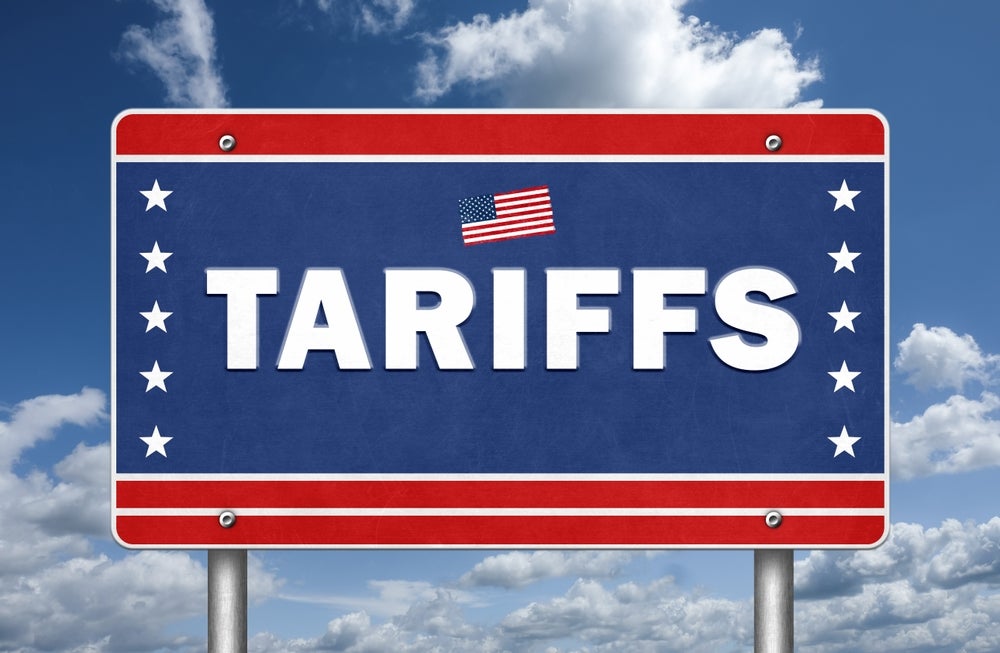
To say that the crypto industry is heading into 2023 on a whirlwind would be an understatement. The 12 months leading into the new year have been brutal for the digital assets market.
The industry has been tormented by scandals, catastrophic company collapses, crashing cryptocurrency valuations, plummeting funding levels and customers fleeing the industry to put their hard-earned cash into perceivable saver havens. It’s not been great.
Scandals and company collapses have haunted the industry in 2022. Crypto ventures like Celsius, BlockFi and Terra are just some of the companies to have closed down this year.
Of those, the implosion of FTX weighs heaviest on the market. The venture had once been hailed as a reliable crypto exchange, with its founder Sam Bankman-Fried, commonly known as SBF, having been seen as the golden boy of the industry. At the beginning of the year, the company was worth $32bn.
That changed in November when an expose on the crypto news website CoinDesk triggered the collapse of the company. The article was based on a balance sheet from Alameda Research, SBF’s crypto trading firm. The balance revealed that it was heavily dependent on FTX’s native token, FTT.
Things went south rapidly after that. Users fled the company, taking their money with them. On November 11, SBF stepped down as CEO. FTX filed for bankruptcy on the same day. SBF has now been arrested in Bahamas, where FTX was headquartered, and is awaiting extradition to the US, where he faces a number of fraud charges.
The crypto community has distanced itself from FTX. Players have done everything imaginable to show that they won’t be dragged down by the collapse of the business and to show they have healthy finances. Companies like Crypto.com have published unedited proof of reserves to that effect.
Unsurprisingly, the public collapses have triggered renewed calls for tougher policing of the crypto industry, building on the regulation already in place. What shape those new rules will take is something the crypto industry will look out for in 2023.
Funding has plummeted as the crypto industry ventures into 2023
The woes of the crypto industry have been triggered by the same market volatility that has affected the rest of the tech sector. Tech stocks have plummeted as the threat of a recession has grown. A bloodbath has ensued, with some market giants failing and others having to kick off painful mass-layoffs.
The flight from digital assets at the start of 2022 was one of the first signs of the troubles the crypto industry was heading into. In November 2021, cryptocurrencies like bitcoin reached their all-time high. Over the next months, they lost about two-thirds of their market value, shaving off roughly $2tn from their overall capitalisation.
Unsurprisingly, investment into blockchain-based businesses has dried up in 2022. Capital raises into blockchain projects have mirrored the price of cryptocurrencies, climbing steadily throughout the pandemic years.
In 2021, investors injected over $52.1bn into the industry across 1,222 venture financing, equity offering, private equity and debt offering deals, according to research and analytics firm GlobalData. The data was extracted on December 16.
The figures of 2022 are more solemn. The industry has secured $23.6bn this year across 1,306 deals.
It is against that rather gloomy backdrop that the crypto industry is now heading into 2023. That's why we took the temperature of what market stakeholders and watchers felt right now and what they're looking for in the next year.
Read on to find out what they said.

Blair Halliday, UK managing director, Kraken
2023 will be the year of the great reset for the crypto industry. While 2022 has been marred by controversy and crypto businesses adapting to the new market conditions, green shoots will start to emerge as trust is rebuilt with the crypto community and broader stakeholders.
However, sentiment will not change overnight if crypto prices rise, as crypto is also caught amongst global macroeconomic factors, as well as the contagion from FTX’s insolvency.
In particular, I expect to see the following four things next year as the crypto industry gets back on its feet: renewed focus on client experience, transparency becomes table stakes, regulation is coming, and crypto demonstrates its force for good.
Recent bull markets have been driven by vast marketing spending, price predictions for crypto assets, and FOMO. In this mania, the focus on solving real world problems for clients was clearly lost. Therefore, I expect the next 12 months to be much more grounded as developers dedicate resources towards building innovative products and services with less hype but more client utility.
2023 will see custodians step up their efforts to provide more transparency to clients as they demand accountability. While proof of reserves audits are an important first step, they alone are certainly not the silver bullet solution to entirely rebuild trust.
The next step on the journey towards a secure client experience involves scrutiny on the quality of proof of reserves audits – assessing for both the liabilities and assets of custodians - as well as other innovative solutions that transparently, yet securely, allow custodians to prove their client’s assets are not being used for any additional purposes without client consent.
It’s no surprise FTX’s collapse has injected urgency for legislators and regulators to respond. HM Treasury has signaled an intent to consult on ways to build a workable regulatory landscape for crypto in the UK. Therefore, I expect 2023 to deliver a clear framework that protects consumers while enabling innovation in the crypto sector. However, it will be key to ensure this framework comes with an enforceable regulatory perimeter that safeguards UK clients by ensuring they receive services from firms that are subject to UK regulation.
Finally, I expect there to be several events over the next 12 months that truly reinforce why cryptoassets are so vital to society. The Ukrainian conflict recently showcased on a global stage how crypto can be used as a rail of last resort, as well as a humanitarian tool. I predict 2023 will have even more moments like this that demonstrate why crypto is worth fighting to preserve.

Maria Lema, co-founder, Weaver Labs
With everything we’ve faced in 2022, 2023 is set to be starkly reminiscent of the 2019 crypto winter, particularly in the cases of new projects and fundraising Web3. We can expect to see more equity-based financing and less DAO investments. As seen in 2019, most Web3 startups will have to show progress and KPIs to close equity rounds. This will be reflected in metrics on traction and adoption.
Hype will also become a thing of the past, replaced instead by more real implementation. Realistic use cases for blockchain will garner the most support. It will be a prime time to show how blockchain, cryptocurrencies and decentralised technology is a solution to real problems across many industries. With the hype gone, only those projects generating real value will progress, which ultimately will aid adoption.

Toby Lewis, global head of threat analysis, Darktrace
The hijacking of computer resources to mine cryptocurrencies is one of the fastest growing types of cyber-threats globally. These attacks are often overlooked as unthreatening background noise’, but the reality is that any crypto-mining infection can turn into ransomware, data exfiltration or even an entry point for a human-driven attack at the snap of a finger.
To achieve the scale of deployment that crypto-jackers are looking for, illegitimate network access must have been enabled by something relatively low-cost – a pervasive software vulnerability or default, weak or otherwise compromised credentials. This means that the basics aren't being done right somewhere, and if a crypto-jacker could do it, what's stopping a ransomware actor from following the same path?
In 2023, crypto-jackers will get more savvy and we might start to see the detrimental effects of what is usually considered inevitable or negligible. Security leaders need to ask themselves: “How did this person get in?” – and shore up the easiest points of entry into their organisation.
Companies should not live with rogue software and hackers siphoning off their resources – particularly as rising energy prices will mean a greater financial loss is incurred as a result of illicit crypto-mining.

Seb Wallace, investment director, Triple Point Ventures
The crisis at FTX and broader crypto crash have dominated fintech headlines over recent weeks and I can’t see either going away any time soon. Crypto is just one sector – but it’s been an important one that attracted a lot of capital and media attention during the recent upcycle.
Some individual VCs may have bet too big in the market but overall we are tempted to say that it is par for the course – hot sectors come and go.
The way crypto might be a bit different from other sectors is that, being finance related, there is the potential for additional collateral damage or even contagion from failures in that sector. Defaults in one company, like FTX, can lead to funding being pulled elsewhere.
We have already seen some collateral damage from the crypto bear market in adjacent sectors. Look at the recent struggles at Pipe, one of 2021’s highest-profile fintechs, which had started lending to crypto miners. So, there may be more FTX fallout to come.
Having said that, there may be some silver linings to crypto’s collapse – like if the demand for semiconductors and energy drops due to the recent crypto setbacks.

Matt Smith, CEO and co-founder, SteelEye
While there has been rapidly increasing acceptance of cryptocurrency in recent years, the industry has been shaken up by the recent FTX collapse, highlighting once again how volatile the space is. It is a fragile market and represents a considerable systemic risk, particularly as the fall of one token significantly impacts the whole market.
Crypto regulation is a responsibility that needs to be taken seriously by regulators worldwide and we welcome debate around the future of the market. However, leaving crypto unregulated would be a grave mistake. With the uptake of crypto among retail investors and financial institutions (particularly in asset management), the ripple effects of simply letting “crypto burn” as some have argued, would have far-reaching consequences.
We believe we will see a regulatory reckoning in the next 12 months. We envisage a world where regulation is sufficiently sophisticated to protect retail investors and make crypto a more stable investment for financial institutions.

Nick White, partner, Charles Russell Speechlys
In 2023, Instagram will spearhead the expansion of NFTs and digital collectibles into mainstream consciousness, giving creators powerful new mechanisms through which to monetise their art and ideas.
Creators will be confronted by challenges in protecting their copyright against copycats and both creators and traders will face a steep learning curve getting to grips with the tax consequences of buying and selling NFTs and cryptocurrencies.
Record numbers of people will learn about and acquire their first crypto wallets. A handful will get scammed and become more streetwise as a result. It will provide fertile grounds for cautious experimentation and learning.

Lone Fønss Schrøder, CEO, Concordium
Web 3 blockchain ID will be the key to revolutionising [the cryptocurrency] industry, and 2023 will be a major driver of growth in this sector. Just like the internet contributed to technological innovations on virtually every level in the past 20 years, I believe decentralised blockchain will be able to do the same for the next 20 years.
However, in order to successfully drive adoption, security needs to be highlighted and put front and centre: it’s not just blockchain technology that will disrupt the internet as we know it (Web2), but it’s blockchain technology with the key added protection layer of identity-based features. An ID framework can single-handedly fuel the global transformation of the next few years, and prevent the issues we are now seeing with passwords, verifications, and identity-based challenges from arising in Web3.
DeFi and DEXs will be big, but only really manage to crack the mainstream ceiling if new functions are implemented to unpack the complexity of DeFi.
When it comes to decentralisation, new solutions are needed to safely participate in the web3 revolution both for customers and developers: there is an urgent need to manage risk, protect customers, and investigate DeFi transactions.
2022 is set to be the biggest year for digital-asset hacks, with $718m stolen from DeFi protocols in October 2022, and that trend simply cannot continue. The dilemma for the crypto industry boils down to this: centralised exchanges are in urgent need of regulation and compliance focus, so that more transparency becomes the standard and helps customers and investors feel more secure.
2023 might be the year to see that tide finally turn. It's tempting to think that decentralised products are the solution, but the complexity hinders the transparency and there is in its nature nobody to hold accountable. It's only a matter of time before regulation will embrace those products as well.
2023 might be the year that Fortune 500 companies start using decentralised blockchain applications in any other capacity other than DeFi. Giants like US Bank, JPMorgan Chase, Bank of America and IBM can be considered early adopters of blockchain technology, but the trend doesn’t stop at banks and related financial institutions.
Samsung announced a blockchain-based security system for its smart devices. Google partnered with Chainlink to enhance privacy, and they will not be the only ones or the last: a survey of 200 Fortune 500 executives recently found that 94% of them currently have blockchain project plans, and many of them will begin to take shape in public in 2023.
Many centralised blockchain products will however cease to exist like Maersk´s Tredelense. It’s more difficult to see the same relevance for centralised blockchain as for decentralised blockchain, and progressive companies will get to love the merciless nature of decentralisation.
When it comes to environmental, social, and governance, investors will quickly realise how they can benefit from decentralised blockchain platforms for transparency. Eventually, this could result in a digital twin, [for instance in NFT form], for all assets, with a cradle to grave assessment considering impacts related to ESG and Co2 at each stage of a product's life-cycle.
Further [CBDCs] will appear, and be a major innovation to take center stage in 2023. These are digital versions of cash, but programmable, that are issued and regulated by central banks, and not to be confused with alt coins or crypto assets, as they are inherently as secure as their non-digital FIAT twin and not at all to confuse with crypto currencies.
According to the IMF, “more than half of the world’s central banks are exploring or developing digital currencies” as they promote financial inclusion, increase the resilience of domestic payment systems, and increase efficiency. It will be exciting to see which countries will release the first CBDCs in 2023.

Chris Harmse, VP of Revenue, BVNK
Amid the ongoing clamour in the crypto sector, it can be easy to overlook the intrinsic benefits and significance of cryptocurrencies – as digitally native assets that offer the possibility of instant transfers to anyone, anywhere, at any time at low fees.
These attributes mean that emerging markets will lead the way in mainstream crypto adoption in 2023. The structure of many emerging market economies means that using cryptocurrencies for payments just makes sense.
First of all, emerging markets typically have a young, digitally savvy population. And yet, they are served by poor financial infrastructure and limited access to financial services. On top of that, emerging markets often suffer from volatile macro environments, high inflation, and high interest rates, combined with weak local currencies.
To mitigate these challenges and inefficiencies, an inherent feature of the current global payments landscape is multiple pre-funded nostro accounts around the world to facilitate international settlement and foreign exchange. This traps capital in the pipes and creates an international payments system that is extremely inefficient with capital.
We’re seeing increased levels of coordination at an international level on regulating digital assets. This will ultimately result in the convergence of legal frameworks and, consequently, the integration of digital assets into global financial systems. This will pave the way for crypto becoming the default rails for international payments and foreign exchange.

Sara de la Torre, head of financial services and insurance, NCC Group
The rise and collapse of FTX and [its] impact on the crypto market teaches us the systemic impact of decentralised trading platforms and very different types of risk, a growth opportunity for Web3 and decentralised finance.
The crypto market will stay. The latest market dynamics do not show the end of it, but rather the beginning of a bear market that will turn into another boom throughout the year.
The use cases and adoption of [DeFi] will accelerate. Bearing in mind the current economic downturn, and the need to identify new ways of driving growth, this will continue to change the financial services industry.
It will also make a positive social impact in many ways. The latest market event will not lead to a misconception of digital assets and its benefits, but rather to a faster shift to Web3, the next big thing. Billions of people around the world need to be part of the financial system via their mobile phone and without intermediaries Web3 will enable that.
The financial services’ transformation is not stopping. In fact, it is evolving at a faster pace than the financial regulators. Our risk, governance and compliance frameworks must change and evolve at a faster pace to enable safety and digital trust. Given the financial losses as a result of FTX, we should be experiencing a more proactive regulatory engagement, particularly from the larger jurisdictions.
Outside the crypto market, institutional investors are partly shifting to traditional assets, although this is temporary. Crypto is not perceived as a systemic threat, but a clear outcome from the early days in the next phase in digital transformation, where technology is ahead of governance and regulatory compliance.
All stakeholders will think through the complexity and value of digital assets. Moreover, greater collaboration will develop across governments, regulators, technologists and cyber expertise in an effort to promote a safe, sustainable digital asset economy.

Nikhita Hyett, EU managing director, BlueSnap
2022 brought the use of cryptocurrency for payments to the forefront and we are now seeing more businesses and governments embrace these digital currencies.
Transaction fees are at the heart of crypto’s predicted growth, with the majority of merchants (77%) reporting that processing fees for cryptocurrency are much lower than alternatives – 1% on average compared to [between] 1.5% [and] 3.5% for cards.
That means cryptocurrencies are even more appealing for cross-border commerce where combined interchange fees up to 5.5% are more affordable. Merchants have been able to counteract this by leveraging local card acquiring but cryptocurrency is now a viable alternative.
With one in three customers in the UK intending to pay with digital currencies, it’s time we recognise crypto as a legitimate payment tool, rather than merely an investment scheme. This is something we can further expect with the inception of [CBDCs]. Initially developed to counteract currencies being used for illicit commerce or tax evasion.
CBDCs can facilitate easy, low-fee digital transactions domestically and cross-border without the volatility of crypto and this volatility can be mitigated through the use of a crypto app, such as BitPay. Through the Bitpay app, you’re able to instantly convert cryptocurrency into a fiat currency.
Ultimately, now that China is piloting CBDCs, it’s almost certain that other G20 countries will follow suit in 2023.

Tim Byun, global government relations officer, OK Group.
The industry is in a period of recovery, which will likely stretch well into 2023. Bad actors, whether ill-equipped to take on sound risk management or wilfully consumed by outright fraud, have caused retail investor trust to be shaken and regulators are rightfully asking more questions of the industry now, just as traditional regulators were after the 2008 financial crisis.
Ultimately, this will spur further collaboration between the industry and those trying to regulate it, as they realise that the parameters used to regulate traditional finance just won’t work for crypto while also realising that cryptography offers unique solutions such as Merkle-Tree proofs that should be embedded into regulatory principles.
I hope 2023 will see fewer governing bodies trying simply to fit a square peg into a round hole, and instead being innovative and creating fresh frameworks that protect consumers while maintaining the viability of businesses in the industry.”
As the wider industry heals, which I have no doubt it will, the focus for 2023 will be unwaveringly on transparency and communicating risk management philosophies and principles. The industry will look back and see this debacle as a needed catalyst for maturation, and as a result we can expect to see those grown-ups in the room succeed, whilst those who lack governance and prudent risk management positions will be further shaken out.
This focus on transparency and trust will drive more investment into the sector's foundational technology, and we're likely to see more sophisticated solutions emerge for purposes such as evidencing proof of reserves. The blockchain’s fundamental utilities are rooted in trust and transparency, and I expect we could see a recentring back onto this foundational philosophy in 2023.

Nuno Pereira, VP of investment and partnerships, Cudos
Just like cryptocurrency, very few have avoided the current global economic climate and cost of living crisis. We’ve even seen Big Tech companies struggle as consumers and businesses tighten belts to prepare for a colder winter this year.
But 2023, will eventually see a positive outcome for crypto, NFTs and also the metaverse. To start, next year will see many new regulations to secure not only the reputation of cryptocurrency, but the foundations and the way it functions, specifically around CEXs and stablecoins in order to protect retail users following the rapid downfall of FTX.
Web3 has been slowly adopted but we will see more global brands entering a decentralised environment, driven by NFTs and the metaverse – a new platform for brands to create their own world to engage, reward and monetise their users and its products.
Gaming will also see an evolution on blockchain, as the likes of PlayStation and other global gaming companies enter the space to provide added value to their users and products.

Alex Reddish, MD, Tribe Payments
While 2022 was a tumultuous year for cryptocurrency, according to the big headlines, blockchain innovation continues. For example, we’re seeing the development of cross-chain bridges so different blockchains can communicate with each other, so smart contracts can read and write data to and from other blockchains.
Despite its setbacks, crypto isn’t going to go away – it’s a trillion dollar ecosystem. But the setbacks may help crystallise what it actually is; not a get-rich-quick scheme or an investment vehicle, but a way to move money around.
As such, we need wider acceptance and better on- and off-ramps to convert crypto and fiat currency. In 2023 there will be a lot of talk of better regulation and oversight, but serious crypto businesses will be continuing to innovate, create a better experience and wider adoption.

Jason Tucker-Feltham, head of crypto sales, IDnow
The FTX saga at the tail end of 2022 has highlighted the importance of a well-thought-out regulatory structure for the trading of crypto assets. Collecting, processing and sharing personal data are fields in which authorities are expected to put in place rules that are unambiguous and robust.
One such introduction is likely to be an extension of the European Transfer of Funds Regulation, [or] TFR, within the EU that is on the horizon for 2023. The regulation will be broadened to include crypto assets, as the senders and beneficiaries of all applicable crypto transactions will need to be identified.
Looking further into the future, additional regulation is expected in the shape of the Markets in Crypto Assets (MiCA) framework. This will see the formation of guidelines for the issuance, admission to trading and operation of crypto assets. MiCA will be developed and put in place by the European Union, but this does not exclude the UK following Brexit. Rather, British providers will almost certainly need to receive MiCA authorisation in order to trade with their counterparts on the continent. MiCA is expected to be rolled out in 2024, so British providers need to get ready for its introduction.
Both of these forms of regulation are piquing interest worldwide following the FTX crash. Although they will be implemented in Europe, the United States, as one of the world’s major crypto hubs, is keeping a close eye on their success. Should they be successful, similar frameworks are expected to be introduced across the Atlantic too.

Shinnosuke “Shin” Murata, founder, Murasaki
The truth is that everyone blindly trusted the FTX and SBF with the money they deposited with them and got cheated out of it by [allegedly] spending it behind their backs.
No matter how well you get on with politicians and influencers, how smart you are, or how altruistic you seem, trust will always be betrayed if there are economic incentives or motivations that benefit the individual.
That is why the bitcoin system assumes humans will betray you for their self-interest. And bitcoin still continues to work without humans’ arbitrariness, is simple and beautiful, and why the concept of self-custody and literacy, which bitcoin enables people to manage their own assets without trusting third parties, is so important.
The fundamental of crypto is issuing a native token and getting leverage from it. Tokens make builders easy to raise funds, and supporters of the project can benefit from tokens with a more fluid environment.
However, this structure creates incentives for people around the operator. The closer you get to token issuers, the more benefits you can get as an insider in exchange for accountability.
The FTX shock happened as a result of losing the trustless environment. When builders develop what people like and want more profitability, the concept of “don’t trust, verify” loses its legitimacy. It is a trade-off.
Cryptocurrencies in 2023 will be the year of the divide. The gap between the concept of bitcoin and the so-called “crypto” will become wider.
In the wake of the FTX case, it seems likely that regulations will get tighter in the future. The SEC will recognise most of the tokens as financial assets, and most of the alternative projects that issued tokens without a license will no longer be able to maintain their token.
So the project owners have to choose if they are going to build a common good with decentalisation, or a service to make profit as a corporate entity under a certain jurisdiction.

Martin Masser, senior product manager of crypto, Lab49.
Next year, the diversification and normalisation of tokenisation and the uses of the metaverse and NFTs will take hold. We will witness a significant drive in the tokenisation of real-world assets, including real estate and commodities.
By having the properties of a digital token, tokenisation will bring many advantages to a tangible asset. Primarily, users will be able to lend on it, fractionise, borrow and even create a basket of assets or funds. Real-world assets will therefore evolve, to be more agile and customisable.
Digital bond tokenisation will increase too, furthering this normalisation. We have already seen many pilots and tests in France, Israel, Singapore, Hong Kong and more. As a result of these trials, banks and central banks are engaged with the possibilities and power of atomic settlement. The advantages of simultaneous and instant settlement will free up liquidity for the banks, providing availability of funds at speed. By removing the need for potentially fallible bilateral and manual settlements, banks can improve their transparency, liquidity and operational efficiency.
At Lab49, we’ve seen an increased curiosity around the metaverse and its offerings too. In 2021, we were explaining to clients what an NFT is, now we are explaining what an NFT isn’t. This is characteristic of where the metaverse is headed in 2023, as it increasingly appeals to a huge new demographic.
The metaverse provides users with a new form of ownership and attachment to objects in a real functioning and traceable economy, in a virtual world. A metaverse will slowly start to be seen as a “blockchain economy”. The characterisation of this, its specific uses and how it will fit into our current world will start to be defined next year. What we can be sure of is that creativity will continue to be rewarded, as users monetise creations and explore ground-breaking capabilities.

Chris Trew, CEO and founder, Stratis
Gaming will be among the first to introduce the mass adoption of non-fungible tokens (NFTs) in 2023. Once the first blockchain-based AAA game is released, three billion gamers will influence related entertainment spaces with NFTs.
Avalanche’s first metaverse game, Imperium Empires, has introduced NFTs, enabling players to purchase unique spaceships that offer unique advantages in the game. Meanwhile, Sony has filed a new patent, which specifically surrounds a system that tracks digital assets in video games using blockchain technology. This system would allow plays to trade in-game assets using blockchain.
Today the NFT art marketplace does not provide a rewarding shopping experience. This is for several reasons: it’s not a shared experience, it’s boring and it's difficult to show off purchases.
Against his backdrop, a US-based videogame company specialising in augmented and virtual reality is building on Stratis. They are currently developing a metaverse-based virtual living room and shopping mall, where users can purchase storefronts to house and display their NFTs.
Built on the Stratis blockchain, the personal social space will enable users to share, show, buy, sell and trade their digital assets with their social network. They will also be able to experience a virtual mall with a similar social hub atmosphere to American shopping malls of the 80s and 90s. Here, users can own or lease (via smart contracts) storefronts as well as lease space from another retailer. There will also be kiosks, entertainment, meeting, collaboration and conversation spaces to enhance the user experience.
Industries such as fashion, music, and art are embracing NFTs too. Adidas Originals launched an NFT collection of physical and digital products available through a metaverse portal on the Adidas website.
Last year [artist] Damien Hirst debuted The Currency, a collection of 10,000 NFts that corresponded with 10,000 original artworks. Buyers could either keep the NFT or exchange it for the real-world counterpart. Kings of Leon released their latest album When You See Yourself, as an NFT enabling buyers to trade it for a physical vinyl copy. Snoop Dogg has also announced that Death Row Records would become the first “NFT label”, while Ozzy Osbourne fans can purchase CryptoBatz NFTs. Osbourne’s Ozzfest event will become the first music festival staged in the metaverse — CryptoBatz holders will have exclusive access to a VIP balcony to watch the shows from a better vantage point.
Within the next couple of years, we will witness well-paid full-time NFT-related employment in the virtual world, and it will change the attitude towards NFTs forever.
In 2023, the Web 2.0 world will increasingly look to make commercial gains in Web3. For example, Apple is looking to capitalise on NFT trades. Coinbase, the largest crypto exchange in the US, claims Apple is blocking transactions on the Coinbase Wallet app. The reason? Apple wants Coinbase to either remove this feature or receive a 30% cut of each transfer. When an NFT sells on the aftermarket, several players make money, including the seller of the NFT, the original creator and the platform it is exchanged on.
When a user takes part in an NFT transaction, they must pay a “gas fee” – a blockchain transaction cost that depends on how busy the specific network is at the time. The busier the network, the higher the fee. Because the fees are paid to those who validate the blocks on the blockchain, and since they don’t go to Coinbase, Apple’s 30% would fall on the users transacting NFTs in the App Store ecosystem.
While this situation remains unresolved, it is a fair indicator of where things might go. If Web.2.0 see an opportunity for financial gains in crypto, then it’s likely they will grab them with both hands.

Marcel Hollerbach, chief innovation officer, Productsup,
In times of uncertainty for businesses, it's hard to be optimistic when talking about crypto – just look at the fall of FTX, the world's second-largest crypto trading exchange. But despite all of the fraud we've seen in this space this year, crypto is not dead.
Hopefully, most of the fraud is now removed from the market, which presents an excellent opportunity for crypto to start recovering slowly but steadily.
In terms of NFTs, next year we'll start to see them called digital collectibles more often, a move being driven by Meta to make them more approachable to the average consumer. Furthermore, big institutional investors are starting to buy Bitcoin again and will most likely continue to do so in the following months.
This growing momentum is being bolstered by more and more banks and retailers adopting crypto to facilitate international transactions, bond issuance or SME payment networks

Daniel Belda, head of product strategy, OpenPayd
In 2023, we’re expecting big things from stablecoins, further blurring the line between tradfi and DeFi. While it’s become clear this year that not every stablecoin is worthy of the name, we expect the relative stability and utility they offer to drive more use cases.
This will especially be the case in markets that are more prone to volatility, whether it be markets in developing countries or within the crypto ecosystem where there is less tradfi infrastructure. The demand for well-designed stablecoins will increase, with the better managed projects emerging as the winners. Stablecoins will steadily become adopted as a means of payment, led out of ‘emerging’ markets.
2023 will be the year some central banks will start exploring CBDCs to understand them better and determine how they really want to use it. We’re still in the early days though, and regulators and central banks are moving slowly (as they should).
2024 is probably the year where we will see more movement and interesting developments in this space though. We shouldn’t expect a big bang in the next 12 months; progress will be incremental and adoption will be uneven around the world.

Daniel Howitt, CEO and co-founder, Recap
In 2021 and 2022, the crypto market had seen highs of near $70,000 per bitcoin – caused by an explosion in the money supply induced by the Covid-19 pandemic.
But the wider economic challenges the West and the UK has faced this year, specifically the energy crisis and high inflation, which the Bank of England is tackling by raising interest rates, has essentially meant the party is over.
Interest rate rises have obliterated the valuation of risk assets like cryptocurrencies. The drop in crypto prices has caused many crypto market participants that were over-leveraged, out of business. With the crypto industry being relatively small, the downfall of actors in the space has caused a contagion effect. Since Three Arrows Capital collapsed, Celsius Network ($billion+ company), BlockFi (billion+ company) and Voyager (billion+ company) have entered into chapter 11 bankruptcy proceedings in the US.
But what does all this mean for 2023? I expect the crypto contagion to continue and market conditions to remain on the downside until we have clarity on how all of these bankrupt companies are going to pay creditors back - will they be forced to liquidate crypto, further crashing prices? I do however, no matter what happens, predict an outlier - Bitcoin.
Because of the exchanges and services going bankrupt in a blink of an eye, users are taking their bitcoin assets off the platforms and putting them into cold storage. This is a way of maintaining self-custody of assets and with the collapse of FTX, brings into focus the question of ‘beneficial ownership’ of assets deposited onto exchanges. We could see a real shift back to self-custody in 2023.
Some exchanges have used customer assets for their own funds too. So I expect to see a regulatory crackdown next year, making it much harder for UK individuals to participate in offshore exchanges. This added friction will have a cooling effect as investors will find it harder to participate in the market.
Part of this regulatory crackdown will be tax compliance on a mass scale. The wheels are already turning on this. The Organization for Economic Co-operation and Development has released its new Crypto-Asset Reporting Framework, [or] CARF, [is one example of] a dedicated global tax transparency framework to provide standardised and automatic reporting and exchange of information for crypto assets.
This has been developed among G20 countries and I expect it will come into play later in 2023 as governments and the finance industry seek much clearer tax transparency in the crypto market.

Nafis Alam, professor and head of school of business, Monash University Malaysia
The recent FTX scandal has made a big dent in the crypto industry, exposing the vulnerability in dealing with cryptocurrencies and engaging with digital asset exchanges (DAXs). The irony is that FTX was not a small player in the crypto market and was popular among investors, venture capitalists, politicians and even in the regulatory space.
FTX collapse has sent a strong signal to crypto enthusiasts – if FTX can collapse, all other DAXs could be vulnerable. This will lead to more DAX losing customers and the trust they have built over the years. This will lead to short-term deterioration in the popularity of crypto, especially bitcoin, and impact the crypto market overall.
On the positive side, the FTX collapse has woken up the regulators, and better regulation is now on its way. Regulators from ECB and [the] Federal Reserve [have] long broadcasted the importance of strong regulations for the crypto market, but unfortunately, we haven’t seen unified crypto regulations emerge in the 13 years of its existence.
The challenge is not to impose regulatory standards on the nature of crypto while creating a safe environment for the crypto lovers. Regulators should not implement extreme solutions which discourage innovation, such as digital currency or tokens. I am a strong proponent of regulation encouraging innovation, protecting providers and users and creating a stable financial system.
The million-dollar question is what will happen to the crypto industry next. And 2023 will be the year of regulation. Regulators must make a unified and coordinated effort to safeguard the crypto ecosystem. No doubt, crypto is here to stay, but with increased regulation, it will be less volatile, less speculative and more attractive as an alternative financial asset. Regulation will keep the FTX saga from happening again.
There will be further innovation in the token market, and more focus on stablecoins rather than cryptocurrencies. DAXs will come under stricter scrutiny, prompting people to hold their investments for longer and bringing price stability to the market. I anticipate Bitcoin will trade in the range of [between] $15,000 [and] $20,000.

Takashi Oka, CEO and founder, Overlay
We expect 2023 to be a major turning point in the history of the crypto industry. The reason for this is that I believe it will be the year in which significant regulation will be implemented by existing states.
The market, which was based on joint-stock companies that supported the development of modern industry, was ridded with fraud during its developmental stage, and even stocks had a reputation for being shady at the time. However, through steady regulation, the market was made healthy and contributed to the development of human society.
The crypto industry has created a rare opportunity for mankind, where even Anon can be rewarded. It has greatly expanded the possibilities for collaboration across borders for mankind regardless of any background.
Like the securities market in its stage of development, the crypto industry has been repeatedly hacked and scammed, and the public has not been able to shake off the impression that the industry is shady.
We would like to remove the suspicion from the industry and show a new way for it to become a tool of cross-border collaboration of mankind.

Keld van Schreven KR1
The decline of FTX marked the end of the first wave of centralised digital asset services that broke bitcoin founder Satoshi [Nakamoto’s] promise in 2009 by gambling customer funds away. We await the big clear out before the mainstream returns with the next bull run.
Following the collapse of FTX, Celsius and Blockfi, exchanges and custodians will need to prove the reserves they have and have some form of protection of customers digital asset deposits. The focus will be on winning confidence back and behaving like grown-up companies.
The market continues to trip along the bottom, dragging down by post CeFi implosion, the recession of 2023 and geo-political tensions in Ukraine. We might see improvement in the summer of 2023, but you can never exactly predict the market cycles in crypto.
Soulbound tokens [is] a new concept that could solve some of the issues around DeFi. These tokens are tokenised proof that you have completed something or attended somewhere, validating your claims or your identify by temporarily revealing your data.
Say you are applying for a job and you need to prove you went to a university and achieved a degree, it is currently all down to the employer to check: there is no proof apart from something that can be forged to say you achieved it. This new concept should allow a third party to view your KYC data on a temporary, read-only basis by signing up to a service. Some innovative projects will undoubtedly receive funding to enable this emergent idea to come to market.
CBDCs are another trend to look out for.] Turkey is forecast to launch a national digital Turkish Lira in 2023 and we may see more countries do the same. These digital coins are centralised versions of bitcoin, with all the coins minted at a keystroke. This means that nothing is decentralised or censorship resistance, but it is a more efficient distribution and collection technology which adds GDP efficiencies on implementation.
We will start to see decentralised organisations (DAOs) that invest in all types of assets become more popular. These allow easier participation with tokens than current TradFi comparables. Some DAOs will be open to everyone, enabling anyone to join and have influence in the DAOs, while others will be more private.
After avoiding the drama in 2022, DeFi will go from strength to strength ,with more innovation and deposits into the projects. By virtue of being ‘proper’ crypto, it will always remain trustworthy.

Tommy Gallagher, founder, Top Mobile Banks
The cryptocurrency space is definitely heating up, and many new developments are happening every day. Some of the most popular cryptocurrencies include Bitcoin, Ethereum, Litecoin, Ripple, and Bitcoin Cash.
As the popularity of these cryptocurrencies continues to grow, so does their value. Many people believe that this burgeoning market will only continue to experience growth in 2023 as more individuals become interested in investing in digital assets.
Some experts even say that this could be a year when cryptocurrencies reach a market capitalisation of $1tn. However, cryptocurrencies are volatile and susceptible to market fluctuations, making it difficult to predict their future value. This is especially true for newer cryptocurrencies that may not have had a long enough history of trading to reflect their worth accurately.
In addition, there has been an increase in fraud associated with cryptocurrencies, which has led some people to question the security of these assets. Additionally, governments worldwide continue to crack down on this industry, which could lead to more regulation and less interest in these assets by investors.
So while there is no guarantee that cryptocurrency will decline anytime soon, it's important to remember that anything can happen. So, whether you're newly interested or have been following the space for some time now, keep your eyes open for exciting news and developments in cryptocurrency over the next year.
GlobalData is the parent company of Verdict and its sister publications.







